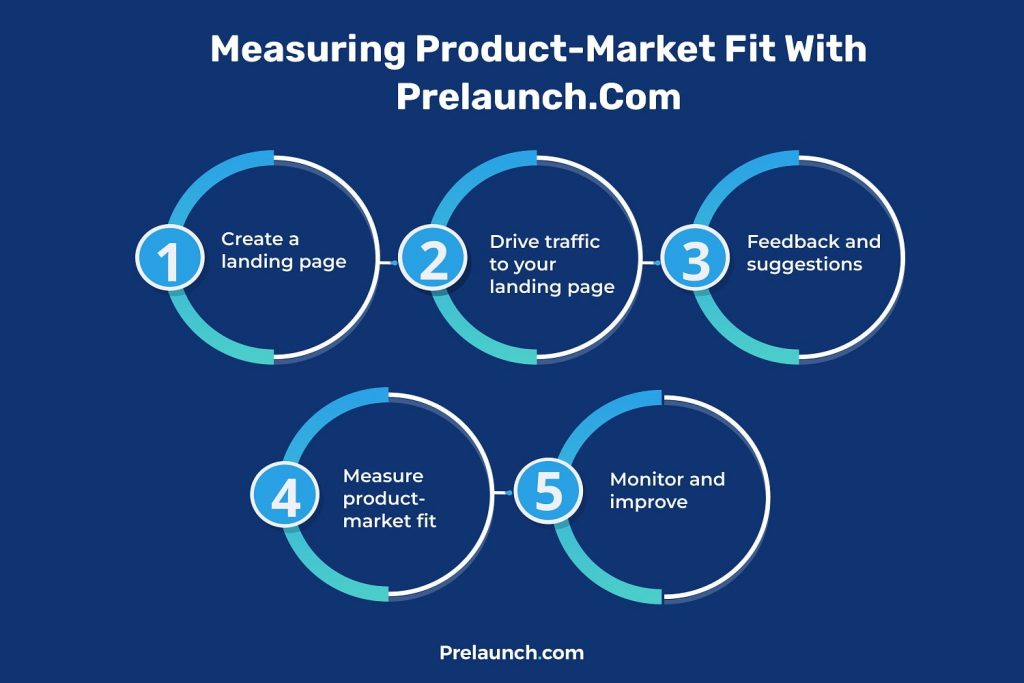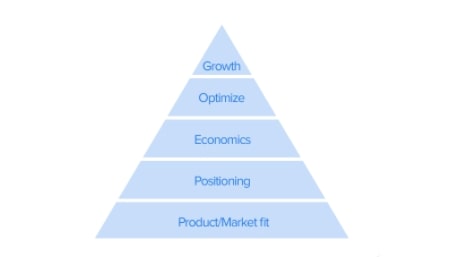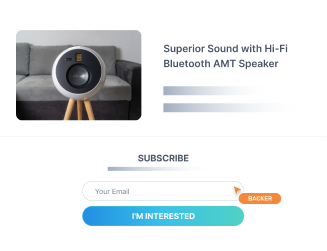All product creators, startup founders, product managers, and marketing experts spend at least a good chunk of their time and resources trying to understand if what they’re building is going to be a success or a total flop. They also research ways to accurately define and measure what that success looks like and how they can achieve it.
At the end of the day, it all comes down to whether or not your product is a right fit for the market – whoever your market is and whatever purchasing or non-purchasing state they are in currently.
Hence, the term product-market fit. A very attractive concept that’s become increasingly popular in recent years and for good reason.
In this article, we’ll dive into all bits and pieces of product-market fit, what it is, why it’s important, how to measure if your product is a fit, and what to do if it isn’t.
What Is Product-Market Fit?
The jury’s still out on a unified definition of the term but put simply, product-market fit is when the product’s target audience is buying, using, and sharing the product with others enough to sustain the product’s growth.
According to Marc Andreessen, the founding father of the term, if you may, “product-market fit means being in a good market with a product that can satisfy that market.”
Essentially, your product has to be made available to people who need it and whose pain points your product can solve substantially.
Easy enough to picture, right? But then why do many creators and founders struggle to achieve product-market fit? There might be a few reasons for this:
- Creators don’t understand the importance of product-market fit
- They lack ways to accurately measure product-market fit
- Once measured, they don’t know how to proceed with the findings – whether good or bad
Let’s start with the first and most obvious one from the list.
Why Should You Care? The Importance of Product-Market Fit
No matter how much we claim that product-market fit is critical for all businesses, it’s better to break down that importance into categories for a more accurate bigger picture. After all, if you don’t have a good product-market fit, all your efforts put into promoting and selling your product will likely fail, resulting in wasted time and other resources.
Put shortly, here’s why product-market fit is so important:
- Customer satisfaction
Achieving a good product-market fit means your customers are satisfied with your product or service. This naturally leads to positive word-of-mouth marketing and high rates of customer retention and loyalty. - Sales and revenue
When your product or service fully meets the needs of the target market, your sales are bound to increase. This, in turn, leads to higher revenue and profitability. - Competitive advantage
Companies that have a good product-market fit possess a substantial competitive advantage in the market over ones that don’t. Not only are they able to attract more customers with more ease, but they are also better equipped to retain them. - Scaling and growth
With a good product-market fit and a solid understanding of the market’s needs, it’s significantly easier to develop new products, features, and services that continuously meet those needs and, ultimately, provide a foundation for growth.
The success of any business depends on achieving and maintaining a good product-market fit. It helps companies better understand their customer’s pain points, improve their products and services based on these findings, and grow.
Have an Idea? Here Is How to Measure Its Product-Market Fit
There’s more than one way to measure the product-market fit of a product or service.
Depending on what stage of production or operation you’re currently in, we’ll cover the two most well-suited ones for all situations: measuring your product-market fit with Prelaunch.com before you launch and using the Sean Ellis test if your product is already available in the market.
Measure Your Product-Market Fit with Prelaunch.com
Prelaunch.com is a platform specifically designed to help creators measure and track their product-market fit. It’s especially beneficial for products that haven’t yet hit the market, helping product creators save time, money, and manpower by establishing early on if what they’re creating is a fit for the market. It also helps identify the best messaging and positioning, the right pricing policy, and areas to improve the product.
Prelaunch.com works by collecting feedback from customers with the highest purchase intent. The intent is measured by a reservation model where visitors are asked to deposit a small amount of money to, quite literally, reserve their spot as soon as the product launches.

How to measure your product-market fit with Prelaunch.com
- Create a landing page
The platform lets you create a highly converting landing page with great UI/UX within minutes. If need be, the integrated AI assistant will help you create the right messaging, descriptions, and all necessary information to be included on the page. All you need to do is give it pointers on the product and provide the visuals.
- Drive traffic to your landing page
Now that your landing page is ready, you can drive visitors there through paid advertising, social media, emails, or any other means of promotion. If you lack expertise or resources for paid advertising, Prelaunch.com’s team will run the advertising for you.
- Feedback and suggestions
Visitors who reserve their spots are asked very specific questions about the product. Analyzing the answers gives creators factual and actionable insights about what the customers willing to pay so early on have to say about the product. It’s different from asking focus groups theoretic questions because while they are interested, they haven’t shown actual purchase intent, and thus are less accurate.
- Measure product-market fit
Based on the feedback and dozens of data points defined and tracked by prelaunch.com, the platform assigns a product-market fit score to the product. The score shows you if you have a good enough product-market fit to launch or need to make adjustments to the messaging, positioning, pricing, presentation, or the product itself.
- Monitor and improve
Making changes to the product presentation, pricing and features and monitoring the results helps creators understand customers better and improve products so they resonate with the target market. This is the key to continuous growth.
Prelaunch.com was designed to help creators make data-driven decisions when introducing a new product to the market and increase their chances of success.
Measuring Product-Market Fit with the Sean Ellis Test
The Sean Ellis test, named after the man himself who’s also the author of a much-beloved “Hacking growth,” is a method to test product-market fit for products and services with existing users. The test is much simpler, compared to other methodologies. It consists of a single important question and 3 conditions.

Respondents are asked to answer the following question: “How would you feel if you could no longer use the [product or service]?” with one of these 3 choices:
- Very disappointed
- Somewhat disappointed
- Not disappointed (it’s not that useful)
The 3 conditions of who to ask this question are:
- Frequent users of the core product/service
- People who have used the product/service at least twice
- People who have used the product/service in the last two weeks
The Sean Ellis test is designed to gauge how well the product fits into its intended market, how well it resonates with users, and how necessary it is to them. Having spent all your focus, dedication and resources on a product can make you biased over time. This test is meant to provide an objective evaluation of an already existing product or service from the users’ perspective.
Ellis recommends the sample size to be at least 40-50 participants, for more reliable data. The more, the better, of course.
If 40% of respondents would be “very disappointed” if they could no longer use your product, that indicates a good product-market fit. However, if the number of “somewhat disappointed” users prevails, that’s still not a bad indicator. It gives you an actionable insight – you have to talk to your users to see where you went wrong and modify your product or service accordingly.
Read more about measuring product-market fit with the Sean Ellis test here.
Not So Fit Yet? How to Achieve Product-Market Fit in 2023 [Examples Included]
If you’ve tried multiple product-market fit testing methodologies and found your results to be disappointing, don’t fret. Achieving product-market fit is a continuous process and we believe that with the right strategic changes, you’ll get there.
That being said, how exactly do you achieve product-market fit in 2023? Let’s take a look at two possible and highly effective examples.
Prelaunch.com: The Ultimate Tool for Achieving Perfect Product-Market Fit
We’ve already covered the main ideology behind Prelaunch.com – it is, quite literally, a platform designed to measure and achieve product-market fit based on reliable data from consumers.
The foundation of Prelaunch.com is based on consumers that are willing to commit financially to a product that doesn’t even exist yet. This makes the results achieved with Prelaunch highly accurate because it takes into account the behavior and feedback of people with very high purchasing intent.
If your first iteration of the Prelaunch test fails, it doesn’t mean your product is doomed. It simply shows you areas where you need to adapt and make changes. So the number one step to take is to look at the right metrics. For example, social media likes and overall engagement is lovely, but it’s not reliable or actionable. What’s reliable is your reservation rates. It’s important to differentiate mere interest from purchase behavior.
If your reservation rates are low, consider changing the price. If you realize the audience doesn’t understand the product, change the way you position it and how you communicate it.
If the interest is there but people aren’t compelled to make a move, change how you present the product visually.
And finally, if visitors who made reservations indicate that you should make a change to the features your product offers, work on it.
Failing to achieve product-market fit from the first iteration is not the end of your product’s journey – it is quite literally the beginning.
Achieving Product-Market Fit with the Lean Product Process
The Lean Product Process is a very widespread methodology for achieving a good product-market fit. It’s designed to minimize the risks, validate or discredit assumptions, and modify the product until it’s a fit for the market.
The Lean Product Process consists of a few stages:
Problem/solution fit
In this first step, you identify the problem and need your customers to develop a solution that effectively addresses and solves this problem.
MVP or minimum viable product
Next, you develop the MVP version of your product that has enough functionality to solve the market’s problem identified in the first stage. Here, you test the MVP with potential buyers to either validate assumptions or find the gaps in the product.
Product-market fit
Collect feedback from potential customers, determine where the product lacks in solving their problems, and iterate product development until you achieve a satisfactory result, which in this case is, undoubtedly, a good product-market fit.
Scaling and growth
Once you achieve the desired product-market fit, it’s time to focus on growth to scale the product and reach wider audiences.
The Lean Product Process, like Prelaunch.com, is an iterative approach. Dissatisfactory results don’t mean failure, they mean that iterations are needed before you achieve product-market fit. All you need to do is:
- Focus on understanding customer needs and how to best meet them with your product.
- Test your assumptions and hypotheses: whether it’s the problem, the solution itself or the choice of the target market.
- Modify and improve the product and processes based on the feedback gathered from potential or existing customers.
- Measure the right metrics for success – customer acquisition, retention and churn rates, and revenue metrics. This will help you make better, more data-driven decisions as you have already eliminated assumptions.
The Lean Product Process is suitable for creators and companies at pretty much all stages of development and is a highly effective multi-iteration approach to achieving product-market fit.
Conclusion
Product-market fit describes a situation in which the product or service fully meets the needs of the market it is intended for. Measuring, achieving and maintaining a good product-market fit is the ultimate guarantee of success for new product creators and larger companies. It provides ground for profitability and future growth. Most importantly, it’s an ongoing process that ensures your product/service continues to be the best in the market because it fits all the requirements its target market has for it.
If your product isn’t yet a fit, it doesn’t mean it can’t be. With iterative measuring approaches and continuous monitoring, you can understand what your target customers lack in your existing or future solutions and make the necessary modifications to achieve lasting and scalable results.
FAQ
Are there any differences in conducting a product-market fit analysis for physical products versus software products?
While the concept of achieving product-market fit is the same for hardware, software and service industries, there are distinct differences in measuring whether or not your end product is a fit for the market.
For software products, the most important metrics to pay attention to are customer retention and growth rates (monthly or annual recurring revenue – MRR or ARR).
If customers use your product once, it’s not an indicator of success just yet. Identify whether or not they come back to do more actions, whether you’ve created a habit loop, and whether they upgrade to a paid version (or a higher tier).
Apart from the differences in metrics that matter most, it’s also important to note that there’s a difference in how you measure product-market fit and make modifications for software versus physical products:
- Feedback collection can now be done through beta testing, user interviews, and more actionable user testing.
- Speed of iteration and modification takes less time and comes with lex complexity compared to physical products where design, engineering, and distribution processes take longer planning and execution, along with higher costs. This allows software products to modify the product much faster and with fewer challenges.
How big are the potential risks of launching without measuring product-market fit before?
The short answer is big, very big. But to give better context, the potential risks of launching a product without testing its product-market fit are substantial:
- Wasted time, money, human resource, and more
Not having a good product-market fit results in limited growth potential and, depending on how far ahead you are with the untested product, might also eliminate your chances of possible changes and iterations. You might end up completely changing the product and starting from scratch.
- Negative/unreliable brand image
This one is quite obvious – launching a product that doesn’t meet the needs of the customers it’s intended for can be the final nail in the coffin. It can create an untrustworthy image of your brand, which will end up costing you additional money to recover along with the first point.
- Missed opportunities
It’s not necessarily a matter of “you only get one chance at launching,” but you do get only one chance at becoming the first one in the market. Launching without a good product-market fit might mean you lose momentum or the chance to secure the biggest share in the market.
How do you know when your product has achieved product-market fit?
As Marc Andreessen once said, “you’ll know.” What he meant by this is that you’ll notice your product growing and reaching wider audiences naturally, through word-of-mouth, all because your market loves how your product is meeting its needs, becoming your brand ambassador. You’ll also notice media inclining towards covering your product/service without much PR expenses. And finally, your revenue will be growing.
However, these are expected consequences of a good product-market fit, but there’s more. The measuring methods we’ve covered in this article will provide you with visible and statistical insights about whether or not you have achieved product-market fit, giving you the confidence to take your business further with peace of mind.
How can businesses maintain Product-Market Fit as the market and customer needs evolve?
The beauty of having a product-market fit is that it isn’t a static concept. As the market and customer needs change, maintaining a good product-market fit becomes a process that requires constant monitoring and adaptation.
Maintaining a good product-market fit is possible through:
- Regular collection of customer feedback
- Constant monitoring of marketing trends to identify areas for improvement
- Testing new features, products and assumptions both about your solution and your users
- Focusing on customer retention, loyalty and decreasing churn rates
Following these strategies is a foolproof way of ensuring you know where your product stands in the market and what to do in case it fails to meet the needs of its target market.
Who is responsible for product-market fit in big product teams?
Whether you’re flying solo or have a big team, product-market fit is a concept that concerns all aspects of your company. Hence, it’s important to include multiple stakeholders in the process of measuring and achieving it.
Product-market fit is part of product development and marketing processes, meaning that the collaborative effort of the following departments in measuring and achieving PMF is crucial:
- Product managers
- Product designers
- Marketing
- Engineering
- Sales
- Customer care and support
Product managers are the strategic brains of the product, but the other departments are responsible for designing and engineering the product in a way that fully meets the needs of the market. Marketing, sales, and customer teams are responsible for communicating the product to its intended users in a way that resonates with the audience, and so their involvement in achieving product-market fit is also necessary.




